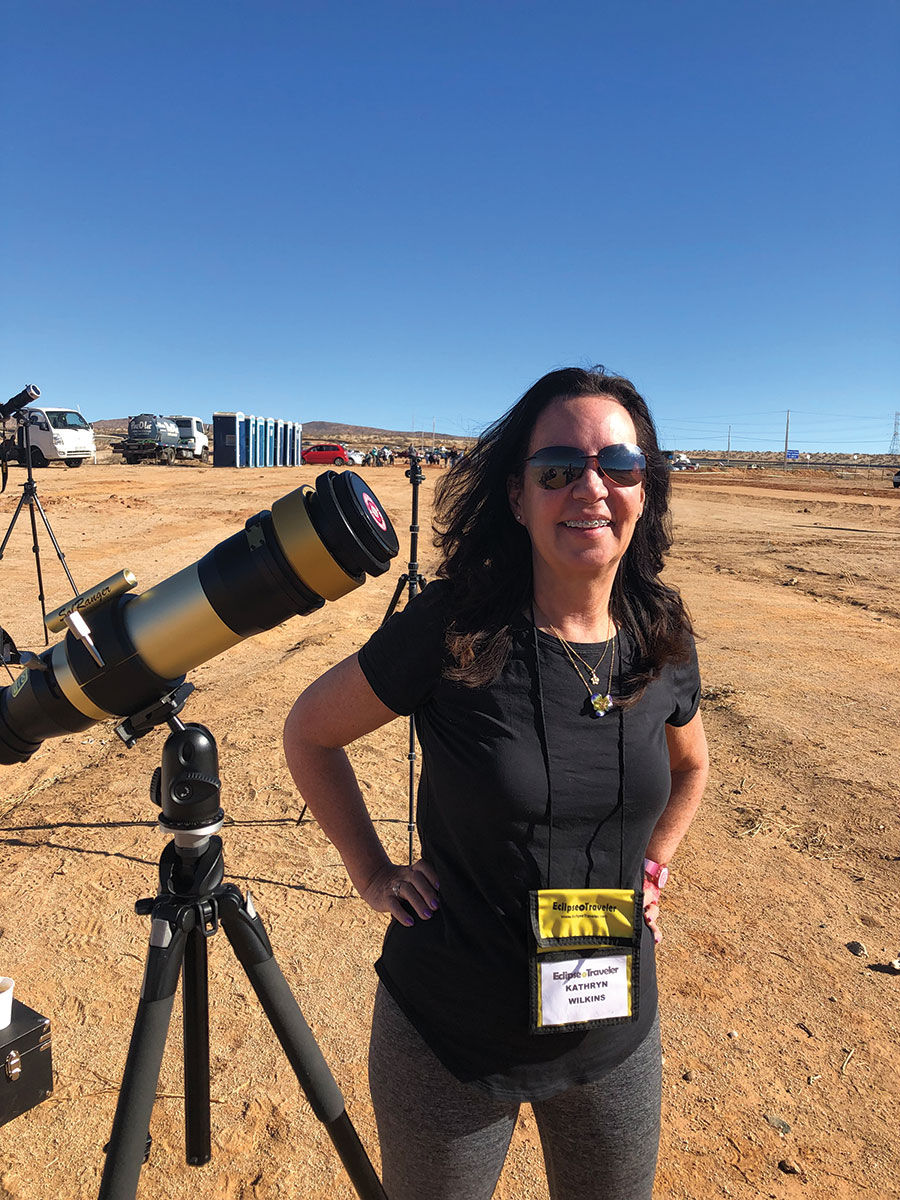Canadian Eclipse Chaser Offers Advice for Getting the Best View of April’s Total Solar Eclipse

The diamond-ring effect around the moon during a total solar eclipse. Photo: John Finney Photography/Getty Images
The first time I saw a total solar eclipse (when the moon completely obscures the sun), I described it as “my vacation to another planet.” It doesn’t look like anything else on Earth, the horizon is a 360-degree sunset and the sun is a gaping black hole with the corona (the sun’s outer atmosphere) shooting off. In the buildup, the light gets dimmer and dimmer, animals start making strange noises, and then, moments before totality, “shadow bands” start forming – thin bands of wavy, parallel lines creating striped patterns on the ground from the Earth’s atmospheric wind. It is such an otherworldly, mind-blowing experience; all around you, people are gasping and bursting into tears.
The total eclipse on April 8 this year is incredibly exciting as it is occurring during the peak of solar maximum, the period of greatest activity during the sun’s 11-year cycle. This means the corona will be bigger and spikier, and we should be able to see the sun’s flares and prominences – gigantic loops of plasma extending outward that appear as bright pink spots on the sun’s edges. It is also going to be an extra long eclipse; the totality will be up to four and a half minutes (versus fewer than two minutes during the 2019 eclipse in Chile). The last time there was a total solar eclipse visible from North America was in 2017 (I travelled to Jackson Hole, Wyo., to view it), and there won’t be another one for 20 years.
The key is to be somewhere in the path of totality, where the chance of cloud cover is as low as possible, hence going to deserts. I am going to view it from Toreón, Durango, in the Mexican desert, which is very close to the centre line. I’m going with Eclipse Traveler. They organized my eclipse trip to the Atacama Desert in Chile in 2019, which was fabulous. They set up travel, hotels, a private eclipse viewing area with tents, food and drink, and had four astronomers accompanying us.

Come prepared with layers of clothing. From the moment the moon touches the sun, it’s about an hour and a half to totality; as the light dims, it gets colder and colder – it can drop by as much as 10 to 20 degrees C. I love how inevitable it is, nothing is going to stop it, it’s celestial clockwork. Go if you possibly can. If the clouds are cooperating, it will be one of the zero-regret things you do in your life.
Mapped Intel:
• Bring a solar telescope, solar binoculars, eclipse glasses or viewer and a foldable chair. You will be watching the whole time and, until totality, it is not safe to view the eclipse with the naked eye. Use eye protection again as soon as you see even a little bit of the sun reappear.
• If you’re planning it on your own, see if there are any highways going east, south, west and north so you can move if you need to get away from cloud cover.
• Stock up on food and drink as you’re often in the middle of nowhere.
• To learn more about eclipses, visit the Eclipsophile website. And to learn about future eclipses, visit TimeAndDate.com.
• There is no point travelling to anything other than a total eclipse – a partial is like going to Disney World and spending your whole time in the parking lot.
A version of this article appeared in the Feb/March 2024 issue with the headline ‘Chase The Total Eclipse’, p. 78.
RELATED:
Photographing the Eclipse? You’ll Join a Long History of People Seeking Proof of Experience
Once In a ‘Blood Moon’: How to Watch Today’s Lunar Eclipse From Canada